Hyperbolic Crochet Coral Reef
The Hyperbolic Crochet Coral Reef opened at the natural history museum. The project uses crocheting techniques that employ hyperbolic geometry to create complex, natural-looking forms, drawing connections between the crocheted reefs and living corals. It is based on Australia's Great Barrier Reef.
Crochet Reef Project, Los Angeles
The Institute for Figuring operates in a zone between participatory science and handicraft. In 2005, as an homage to the Great Barrier Reef in their native Australia, Margaret and Christine Wertheim, founders of the Institute for Figuring, Instigated a project to crochet a woolen reef. the project began in their living room in Los Angeles and has since become a worldwide movement that engages communities across the globe. The Crochet Reef project is a unique fusion of art, science, mathematics, handicraft and community practice that is intended to draw attention to the present environmental threats to the reef, including pollution, climate change, fishing, shipping, and human use. These images from the 2011 Smithsonian installation of Hyperbolic Crochet Coral Reef represent the contributions of over 1,000 participants in this collective crocheting effort.
The technique of "hyperbolic crochet" used by the Wertheims and their countless collaborators was discovered in 1997 by Cornell University Mathematician Dr. Diana Taimina. As the Wertheims write on the project's website,
The basic process for making these forms is a simple pattern or algorithm, which on its own produces a mathematically pure shape, but by varying or mutating this algorithm, endless variations and permutations of shape and form can be produced.
Additional Reading
Main Website: http://crochetcoralreef.org/
Margaret Wertheim, TED Talk: http://www.ted.com/talks/margaret_wertheim_crochets_the_coral_reef.html
No comments yet. Why not add the first?
Acknowledgements & Credits
The Institute for Figuring
Hyperbolic Crochet Coral Reef
2005-Ongoing
Adapted from the 'NEW ART/SCIENCE AFFINITIES'. Published by the Miller Gallery at Carnegie Mellon University and the STUDIO for Creative Inquiry and available at http://millergallery.cfa.cmu.edu/nasabook/
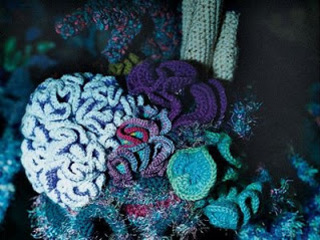
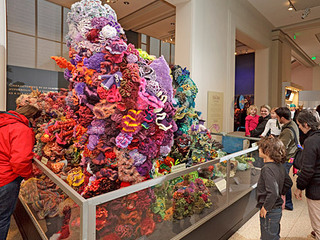
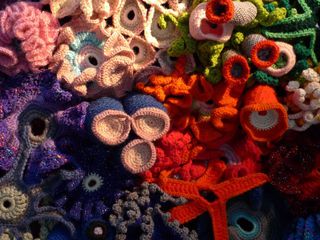
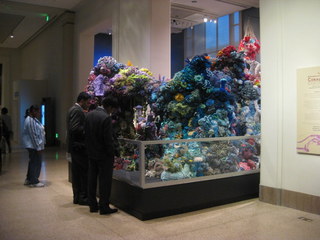
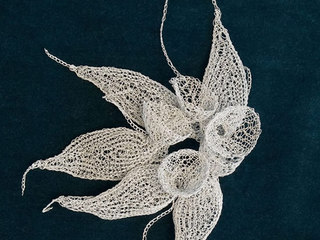
← Back to work
0 Comments